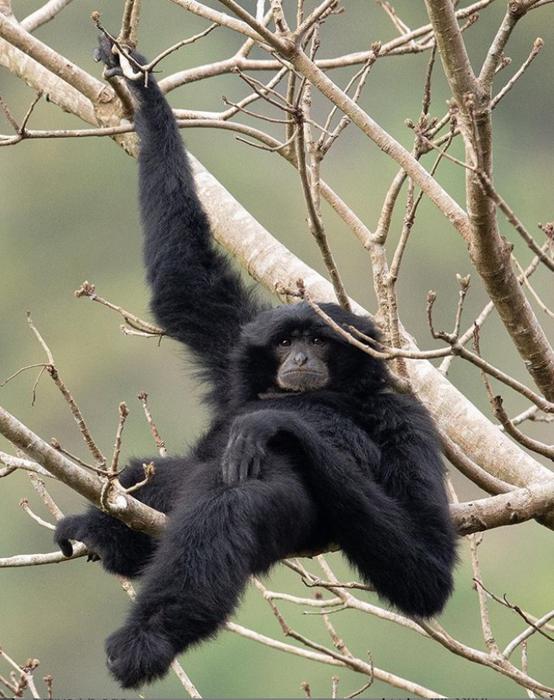Benjamin Galea
Small apes/gibbons (Hylobatidae) play a critical role in overall forest health and regeneration; they are prolific short- and long-distance seed dispersers of commonly consumed rainforest trees. In Malaysia, gibbons also possess an important historical connection. Though their distribution spans South and South-East Asia and southern China, the etymology of their name originates from a Northern Aslian language used by Menraq communities within Peninsular Malaysia. All of Peninsular Malaysia's gibbons, including lar gibbons (Hylobates lar), agile gibbons (Hylobates agilis), and siamangs (Symphalangus syndactylus), are classified by the International Union for Conservation of Nature (IUCN) as Endangered with decreasing populations. Forest clearing for plantation agriculture, selective logging, and a dense road network are primary drivers of forest loss and fragmentation affecting Malaysia's primates, including its gibbons. As they are territorial, gibbons are limited in their ability to adjust their home range as a functional response to human disturbance, thus the distance travelled by gibbons living in fragments is significantly lower than those living in continuous forests. Gibbons living in isolated forest fragments throughout Malaysia may not persist in the long term even when habitat quality within fragments is high; gibbons avoid using the ground, so discontinuities in the forest canopy can reduce access to resources, increase competition for resources between neighbours, and increase susceptibility to predation and hunting. If gibbons do descend to the ground in an attempt to crossroads bisecting habitat fragments, they run the risk of being victims of roadkill. Moreover, gibbon mortality may also occur through electrocution when they use transmission lines in place of tree canopies for arboreal travel.

Siamang (Symphalangus syndactylus). © Peter Ong, Project Monyet.
To mitigate the effects of wide clearings and forest fragmentation on gibbons, canopy bridges may be used to create corridors for movement. Canopy bridges effectively facilitate primate travel between fragments, enhancing connectivity, increasing access to resources, and restoring gene flow. Bridges can also mitigate the risk of road collisions for primates and other arboreal animals. As habitat fragmentation in Malaysia increases, its gibbons require canopy bridges to assist their movement and improve habitat connectivity to ensure their long-term persistence. We are working to restore critical connections between patches in fragmented habitats by establishing the first-ever large-scale primate canopy bridge network. We will be monitoring the activity of our gibbons after they cross our bridges using passive acoustic monitoring (PAM), a novel approach which may serve to advance techniques in conservation initiative monitoring and evaluation.